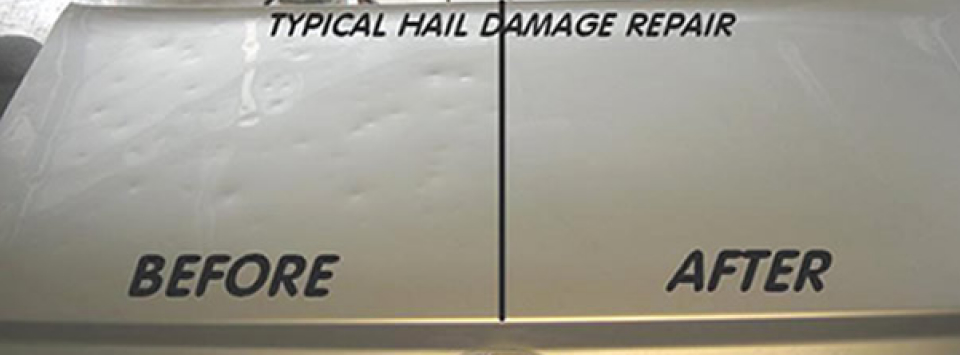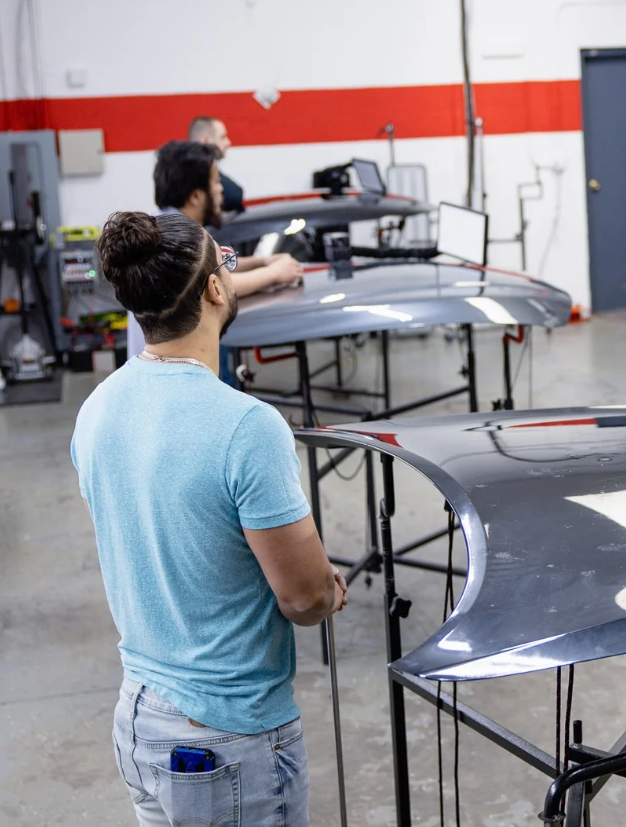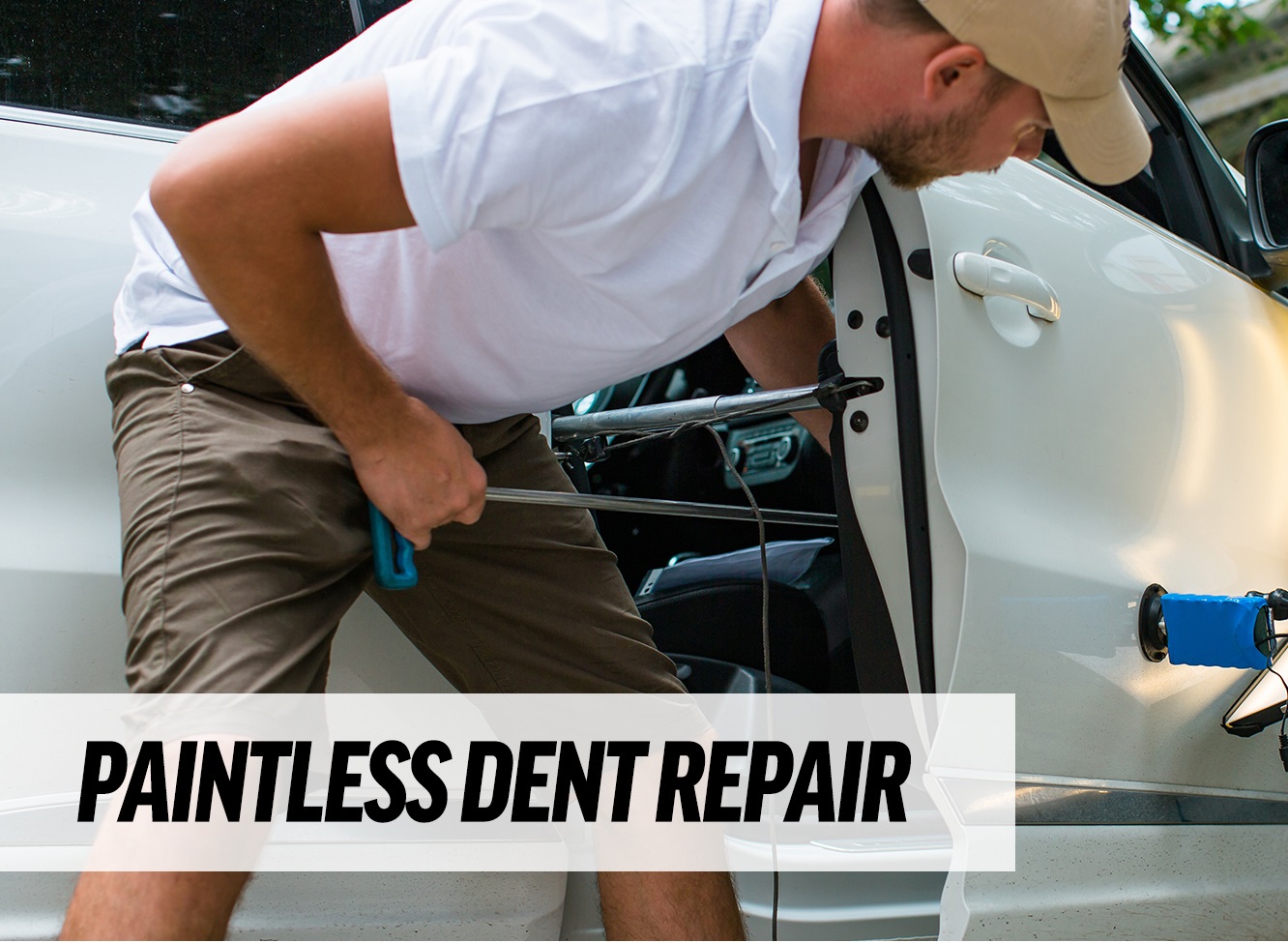Hail Damage ?
- Up to $1000 Deductible Waived
- Works with all Insurance
- All Makes and Models
- Hight Quality 5 Star work
- Paintless to Complicated

Tough dents don’t always demand drastic treatment. Sometimes, gentle coaxing produces better results. With the right tools and skills, a talented dent technician can massage the metal back to its original position without requiring a single drop of fresh paint. Welcome to the world of paintless dent removal – PDR – (also referred to as paintless dent repair by those outside of the industry) which is a process that can remove dents without altering the top layer of paint. A skillful job will erase all evidence that a dent ever marred your vehicle’s exterior. It has benefits similar to non-invasive surgery.

It is cheaper and less time consuming than alternatives, using up only a fraction of the time required to do conventional bodywork. PDR is as much as 50% cheaper than traditional repair.
Retains the value of your vehicle better than alternatives, restoring the factory finish that was there when your car first rolled off production lines.
It is more eco-friendly than conventional repairs. It doesn’t use pollutants that release noxious gases, and it leaves no groundwater contamination behind.
Lastly, and one of the best benefits, it won’t require you to repaint your car.
It’s not all bells and whistles, unfortunately. Not all dents are PDR candidates. Let’s take a closer look at the paintless dent repair process and tease out which dings and dents might be fixed this way.
You’ve probably dented a soda can before and coaxed it back into shape. PDR works in much the same way for a complete dent removal. PDR auto body technicians gain access to the opposite side of the dent, then gently coax it back into shape. The technique isn’t quite as simple in action as it is in principle, though. PDR technicians must first prepare the area around the damage and remove panels to gain access to the dent in its entirety. The process demands precision, skill, and all the right tools such as light bar, spring rods, knock downs, push rods, and whale tails. Gaining access to the opposite side of a dent is more difficult than you might think. Some panels are tough to remove, and others are protected by plastic interior trim, and other fasteners. Skilled PDR technicians can, however, find a pathway to almost every dent, even if it means removing a panel entirely.
Once the technician has the offending dent cleared of obstruction, he will choose the right tools and tool sizes for the task. Choose the wrong instrument, and you’re at risk of pushing the dent too far in the other direction or adding cracks and creases. Now it’s time to massage the dent away. It’s a relatively fast procedure that will return your car to the road within a day or two, but don’t mistake quickness for lack of skill. Will’s Auto Body technicians have steady hands and the mechanical prowess to control every part of the process. Amateur paintless dent removal risks stretching metal, causing cracks, and weakening a panel’s structure. At Will’s, we apply to right force and care to mold your car back to its pre-dent glory.
Paintless dent removal might be a powerful technique, but it’s not omnipotent. It can remove small dents and minor body damage provided your paint remains intact. While it can treat dents that are several inches in diameter, some are too heavily creased or deep for subtle repair techniques. Deeper dents push your paint beyond its elasticity limits, causing cracks–a problem that inexperienced technicians can cause even with a shallow dent. These flaws are even more obvious if your car’s original paint has the wrong additives, so don’t try to judge your PDR candidacy without professional advice. Some brands of paint are more elastic than others and are thus better PDR candidates, even if your dent is severe. Clear coats can create brittleness as well.

The shape of your dent might also disqualify this process. Complex dent shapes tend to be harder to fix, particularly when there is creasing. Round, smooth dents are easier to manipulate back into shape, but severe creases tend to leave ridges behind after an attempt at PDR. Ninety percent of dents can, however, be cured without body filler or paint if paintless dent repair isn’t an option for your vehicle damage.
Every body panel has its own shape, material, and degree of accessibility, so PDR candidacy isn’t always a simple five-point question. Sheet metal hoods, for example, are easy to remove and gain access to, so technicians will have no trouble getting into the right position to fix a dent. Alloy and sheet metal respond well to manipulation, but carbon fiber and fiberglass are not flexible enough for PDR and usually break or crack during the paintless dent removal process.
PDR can be used in many diverse situations. Minor collisions usually cause uniform, simple dents that are often crack-free and primed for easy repair. Door dings sometimes cause nasty dents, but they have a distinctive shape caused by the round exterior edge of the car door. This generally causes an oval-shaped dent that’s the ideal candidate for PDR provided there are no scratches. If a trace of paint has transferred itself onto your car, it might be easy to remove without sanding.
PDR is often used to fix hail damage, but cracks or chips require a more invasive solution. Hail damage generally causes golf ball-shaped dents, which are smooth and absent of stress cracking, but severe winds might stymie your PDR ambitions. Gales add to hail damage and could create dent shapes that are too complex to be manipulated back into shape. If your dent is on a body line or at the edge of a panel, you’re your PDR candidacy is a little more difficult to judge. While these jobs may not be ideal for PDR, they will take a little more time and devoted effort to remove dents.
Sports accidents such as pop fly baseball or a sideline blasted soccer ball rarely cause scratching or complex dent shapes, so you should be able to return your car to its original sparkling self. In general, the rules of candidacy are the same: simple shapes with no scratching or creases can usually be fixed the paintless way.




